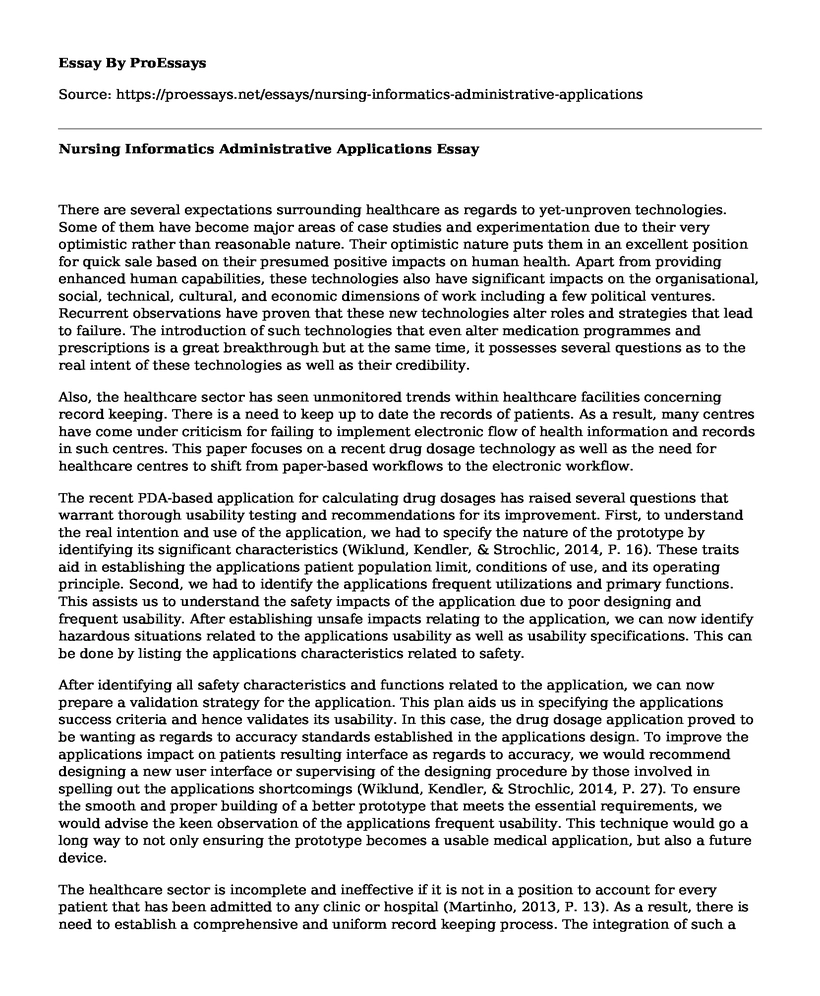There are several expectations surrounding healthcare as regards to yet-unproven technologies. Some of them have become major areas of case studies and experimentation due to their very optimistic rather than reasonable nature. Their optimistic nature puts them in an excellent position for quick sale based on their presumed positive impacts on human health. Apart from providing enhanced human capabilities, these technologies also have significant impacts on the organisational, social, technical, cultural, and economic dimensions of work including a few political ventures. Recurrent observations have proven that these new technologies alter roles and strategies that lead to failure. The introduction of such technologies that even alter medication programmes and prescriptions is a great breakthrough but at the same time, it possesses several questions as to the real intent of these technologies as well as their credibility.
Also, the healthcare sector has seen unmonitored trends within healthcare facilities concerning record keeping. There is a need to keep up to date the records of patients. As a result, many centres have come under criticism for failing to implement electronic flow of health information and records in such centres. This paper focuses on a recent drug dosage technology as well as the need for healthcare centres to shift from paper-based workflows to the electronic workflow.
The recent PDA-based application for calculating drug dosages has raised several questions that warrant thorough usability testing and recommendations for its improvement. First, to understand the real intention and use of the application, we had to specify the nature of the prototype by identifying its significant characteristics (Wiklund, Kendler, & Strochlic, 2014, P. 16). These traits aid in establishing the applications patient population limit, conditions of use, and its operating principle. Second, we had to identify the applications frequent utilizations and primary functions. This assists us to understand the safety impacts of the application due to poor designing and frequent usability. After establishing unsafe impacts relating to the application, we can now identify hazardous situations related to the applications usability as well as usability specifications. This can be done by listing the applications characteristics related to safety.
After identifying all safety characteristics and functions related to the application, we can now prepare a validation strategy for the application. This plan aids us in specifying the applications success criteria and hence validates its usability. In this case, the drug dosage application proved to be wanting as regards to accuracy standards established in the applications design. To improve the applications impact on patients resulting interface as regards to accuracy, we would recommend designing a new user interface or supervising of the designing procedure by those involved in spelling out the applications shortcomings (Wiklund, Kendler, & Strochlic, 2014, P. 27). To ensure the smooth and proper building of a better prototype that meets the essential requirements, we would advise the keen observation of the applications frequent usability. This technique would go a long way to not only ensuring the prototype becomes a usable medical application, but also a future device.
The healthcare sector is incomplete and ineffective if it is not in a position to account for every patient that has been admitted to any clinic or hospital (Martinho, 2013, P. 13). As a result, there is need to establish a comprehensive and uniform record keeping process. The integration of such a plan, especially an electronic one will go a long way to ensuring the continued maintenance and preservation of medical records over years (Martinho, 2013, P. 21). Apart from keeping genuine records, an implementation of such nature would greatly aid nurses in keeping records that can be used for reference in the future. Apart from this, it can help practising nurses quickly solve similar cases since they have accessible records within the centres information system.
As an information specialist, well trained in the field of electronic records, I believe moulding paper-based workflows is one path to enhancing faster and thorough medical care. The implementation of the electronic system would ensure nurses can cater for several patients daily. This is because they do not have to trace paper records from a stack of files. To ensure the smooth integration of the system, I would recommend the recruitment of information specialists into healthcare centres. Apart from recruiting needed personnel to suit the requirements of healthcare centres, there is also need to procure adequate equipment to meet the information system standards. This way, every clinic or hospital is guaranteed of a stable healthcare system.
References
Martinho, R. (2013). Information systems and technologies for enhancing health and social care. Hershey, Pa: IGI Global (701 E. Chocolate Avenue, Hershey, Pennsylvania, 17033, USA.
Wiklund, M. E., Kendler, J., & Strochlic, A. Y. (2014). Usability testing of medical devices.
Cite this page
Nursing Informatics Administrative Applications. (2021, Mar 02). Retrieved from https://proessays.net/essays/nursing-informatics-administrative-applications
If you are the original author of this essay and no longer wish to have it published on the ProEssays website, please click below to request its removal:
- Effects of Social Media on Physical and Mental Health Essay
- A Nurse's Story - Essay Sample
- American Red Cross Society a Non-profit Organization Paper Example
- HFCS Has Contributed to Increased Body Weight of Americans - Essay Sample
- Organizations: Enhancing Cybersecurity With ML & AI - Annotated Bibliography
- The Great Pandemic: John Snow's Contributions to Modern Epidemiology - Research Paper
- Free Essay Example on Empowering for Nurses







